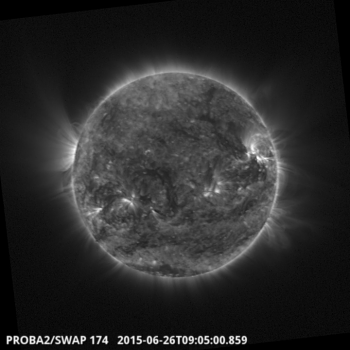A short update on space weather status from Juha-Pekka Luntama, responsible for space weather activities at ESA’s Space Situational Awareness programme office at ESOC, Darmstadt, Germany.
As of yesterday, Earth was still within the plasma cloud of the CME from 22 June, which arrived around 13:00 UT (15:00 CEST) on Wednesday. Thus, the Earth is surrounded by a region of high speed solar wind. Because the Interplanetary Magnetic Field (IMF) of the Sun turned southwards during the night of Wednesday/Thursday, the high-speed solar wind triggered a moderate geomagnetic storm that started around 06:00 UT (08:00 CEST) yesterday. This storm continued throughout the day yesterday.
Another strong M-class solar flare was detected from the Sun’s active region 2371 at 08:15 UT (10:15 CEST) yesterday. This flare was associated with an Earth-directed CME. The initial estimate of the speed of the CME was 1600 km/s, which would make it one of the fastest CMEs observed during the current solar cycle. The CME is estimated to arrive to the Earth around 16:00 UT (18:00 CEST) today, 26 June. Because the speed of the CME, up to severe geomagnetic storm conditions can be expected Friday evening.
The >10 MeV solar proton flux continues to decrease and no increase in the flux has been detected after the new flare this morning.
Next 48 hours
The CME from 25 June is predicted to reach Earth around 16:00 UT (18:00 CEST) 26 June. Up to severe geomagnetic storm conditions are predicted after the arrival of the CME. The final level of geoimpact will depend on the direction of the IMF at the time of the arrival. This can be confirmed only when the CME passes L1 point about 15 minutes before it hits Earth.


Discussion: no comments